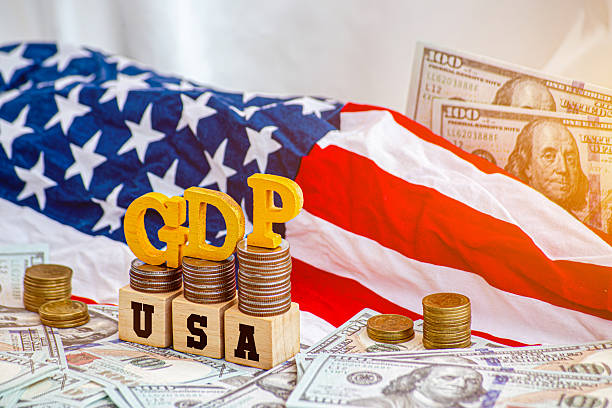The United States federal government’s fiscal performance has shown measurable improvement through the first full calendar year of the Trump administration’s economic agenda, with Treasury officials highlighting a substantial reduction in the government’s deficit-to-GDP ratio. Scott Bessent, Treasury Secretary, presented this metric as evidence that the current administration’s approach to fiscal management is delivering results without triggering an economic contraction.
According to the most recent data from the Congressional Budget Office, the deficit-to-GDP ratio for fiscal year 2025 stands at 5.9%, representing a meaningful decrease from the previous year’s 6.4%. This shift is particularly significant given the historical context that Bessent referenced during his remarks at a Federal Reserve-hosted community bank conference. The Treasury Secretary noted that the 2024 deficit-to-GDP ratio represented the highest level recorded during any period outside of armed conflict or recession in American history, making the subsequent improvement noteworthy from a macroeconomic perspective.
The absolute deficit figure for fiscal year 2025 remains substantial, with the Congressional Budget Office estimating the total budget gap at approximately USD 1.8 trillion. This level represents minimal variation compared to the previous fiscal year, suggesting that the improvement in the ratio stems primarily from underlying economic growth rather than a substantial reduction in the absolute deficit amount.
Tariff Revenue and Government Spending Dynamics Present Mixed Signals for Long-Term Fiscal Health
The mechanisms driving the current deficit reduction reveal a complex picture regarding the sustainability of improved fiscal metrics. The administration’s imposition of tariffs on imported goods has generated substantial customs duty revenue, contributing meaningfully to the deficit improvement observed in recent quarters. However, this revenue enhancement sits alongside countervailing fiscal pressures that may limit the scope for further improvement.
Government spending continues on an upward trajectory, indicating that expenditure reduction has not been a primary feature of current fiscal management. Simultaneously, the administration’s corporate tax reduction programme has begun eroding the government’s revenue base, introducing a structural headwind to further deficit improvements. These competing dynamics suggest that the tariff revenue, whilst material in the immediate term, may not provide a stable foundation for sustained deficit reduction absent additional policy measures.
The Congressional Budget Office has identified another significant development affecting the government’s fiscal position. Interest payments on the national debt exceeded USD 1 trillion annually for the first time in fiscal year 2025. This development represents a notable escalation from previous periods and underscores the growing burden that servicing accumulated government debt represents within the federal budget.
Treasury Administration Targets Further Deficit Reduction
The Treasury Secretary has articulated a specific target for deficit reduction over the duration of the current presidential administration. Bessent indicated his intention to reduce the deficit-to-GDP ratio to a level beginning with the digit three, representing approximately a 50% reduction from the 2024 level. The Treasury official characterised the current progress as movement in the desired direction, suggesting confidence that the administration’s economic policies remain aligned with this longer-term objective.
The comments represent a notable departure from deficit dynamics that characterised much of the post-2008 period. The stated target would represent a return towards deficit-to-GDP ratios typical of the early 2000s, before the financial crisis and subsequent expansionary fiscal responses fundamentally altered the trajectory of government debt accumulation.
Tax Code Changes Introduce Consumer-Focused Benefits
The administration’s comprehensive tax legislation package, referred to as the One Big Beautiful Bill, has introduced several modifications to the federal tax code designed to provide relief to lower-income households. These changes include the elimination of taxation on tips in certain service sectors, a reduction in federal taxation of Social Security benefits, and the establishment of interest deduction provisions for purchases of domestically manufactured automobiles.
The Treasury Department anticipates that these modifications will generate substantial tax refunds during the upcoming fiscal year, with specific targeting towards lower-income households and the bottom 50% of earners by income. Bessent described these refunds as coinciding with adjustments to payroll withholding arrangements, resulting in materially higher real take-home pay for affected workers throughout the year rather than concentrated refunds at tax filing time.
The distributional focus of these tax changes introduces a specific economic dynamic. Lower-income households typically exhibit higher marginal propensities to consume relative to higher-income cohorts, suggesting that enhanced disposable income among this population cohort may flow more readily into increased spending rather than incremental saving. This effect could introduce inflationary pressures within the near term, with potential implications for interest rate policy and asset valuations across equities and crypto markets.


